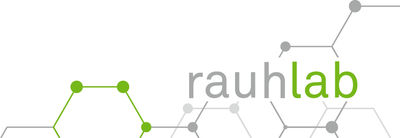Mission and vision of the Rauh Lab

The treatment of genetically defined cancer is currently experiencing a revolution. Over the last decade, the knowledge gained about the biochemical features of biomarkers and their predictive abilities has led to the development of targeted small-molecule inhibitors that present an alternative to harsh chemotherapy. The use of these new therapies has improved the quality of life and increased the survival of patients. The occurrence of inevitable drug resistance requires the constant development of precision medicine. The detailed understanding of the target biology and the search for innovative chemical approaches has encouraged investigations in this field.[1] Against this background, research in our lab is dedicated to medicinal chemistry, compound screening technologies and chemical biology approaches. It is our goal to develop, synthesize and facilitate desperately needed tools to study target protein function in cells and organisms to push research to exciting new frontiers. In our research, we employ organic synthesis[2], biochemical and cellular compound screening[3a, 3b, 3c], structural biology, structure-based design as well as target identification[4] for the development of inhibitors and functional probes to perturb proteins of interest.[5a, 5b] A strong focus in the lab is on personalized medicine for the treatment of cancer.[6] Here, we closely collaborate with clinical oncologists to better understand the mechanisms of resistance and to develop compounds to overcome acquired drug resistance in non-small-cell lung cancer[7a, 7b] and gastrointestinal stromal tumors.[8a, 8b] We are motivated that our techniques and investigations will lead to a better understanding of the molecular and cellular causes of fatal diseases and stimulate the development of new drugs. We are also interested in developing means to bridge the gap between basic university-based research and practical application. We recently established the “Zentrum für integrierte Wirkstoffforschung” (ZIW) as well as the Drug Discovery Hub Dortmund (DDHD).
References:
- J. Lategahn, M. Keul et al., Angew Chem Int Ed Engl 2018, 57, 2307-13.
- J. Engel, C. Becker et al., Angew Chem Int Ed Engl 2016, 55, 10909-12.
- a) S. C. Mayer-Wrangowski, et al., Angew Chem Int Ed Engl 2015, 54, 4379-82; b) R. Schneider, et al., J Am Chem Soc 2013, 135, 6838-41; c) J. R. Simard, et al., Nat Chem Biol 2009, 5, 394-6.
- M. Bührmann, et al., Angew Chem Int Ed Engl 2017, 56, 13232-36.
- a) Z. Fang, et al., ACS Chem Biol. 2015, 10, 279-88; b) Z. Fang, et al., ACS Chem Biol. 2013, 8, 58-70.
- J. Weisner, R. Gontla et al., Angew Chem Int Ed Engl 2015, 54, 10313-16.
- a) J. Engel, J Med Chem. 2017, 60, 7725-7744; b) M. L. Sos, et al., Cancer Res 2010, 70, 868-74.
- a) H. Kaitsiotou, J Med Chem. 2017, 60, 8801-15; b) A. Richters, et al., J Med Chem 2013, 56, 5757-72.

